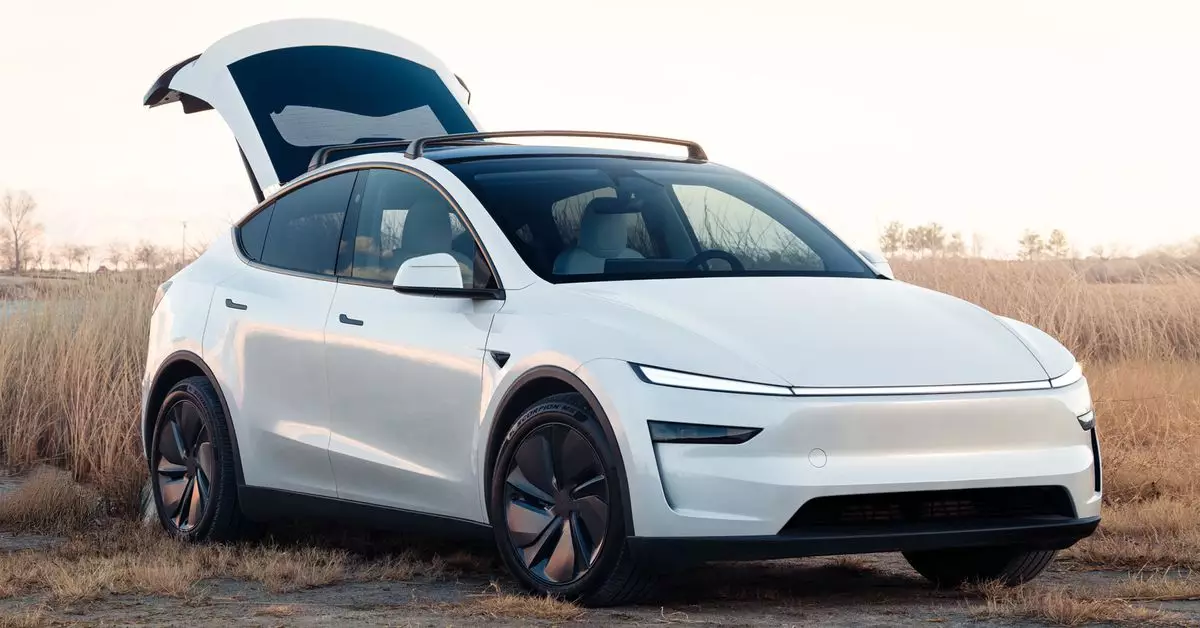In a bid to reinvigorate its brand and product lineup, Tesla has rolled out an updated version of its Model Y, specifically tailored for the Asia-Pacific markets, but it isn’t stopping there. The company has expanded its sales to regions including the Americas and Europe, signaling an ambitious strategy to capitalize on growing demand. Despite a vibrant launch, the company faces numerous challenges in maintaining consumer interest and confidence.
The fresh iteration of the Model Y, termed the “Launch Series” in the United States, stands out through its ostentatious offerings. Priced at $59,990 before any discounts, this premium trim provides an enticing assortment of features. The inclusion of the Full Self-Driving capability (albeit under supervision) and the Acceleration Boost gives this vehicle a competitive edge among its peers. However, these enhancements raise questions about their practicality for everyday users.
Notable aesthetic changes include a redesigned front and rear lighting setup, alongside an upgraded interior featuring an 8-inch touchscreen for rear passengers. Additionally, the model boasts improved acoustic glass treatment as well as a refined sound system equipped with a greater number of speakers. Of particular interest is the reported return of a turn signal stalk beside the steering wheel, a departure from Tesla’s recent trend of integrating all controls into on-wheel buttons.
The revelation of Tesla’s first year-over-year sales decline presents a stark contrast to the company’s previous growth trajectory. While refreshed models can draw initial customer excitement, new lighting and design elements may not suffice to mitigate growing concerns regarding Tesla’s brand reputation. Factors that contribute to ths stagnation include fierce competition in the electric vehicle (EV) sector and skepticism surrounding the real-world efficacy of its features, particularly the Full Self-Driving technology.
Moreover, despite improvements in functionality and design, the market conditions painted a more complex landscape. The lingering availability of the older Model Y with an invitation for reduced pricing adds a layer of confusion for prospective buyers. When faced with a minimal price difference—only around $4,000 separating the older Long Range dual-motor AWD from the new variant—consumers may hesitate to commit to the latest model.
The new Model Y claims a competitive range of 320 miles, though it lacks an official EPA stamp compared to the previous version’s estimated 311 miles. It’s noteworthy that until recently, Tesla had proudly advertised a range of 330 miles for the previous version, which casts a shadow over its current marketing efforts. Additionally, acceleration metrics indicate an impressive 0-60 mph time of 4.1 seconds, significantly better than the 4.8 seconds of the older model.
However, in a concerning trend, the maximum allowable speed has been curtailed from 135 mph to 125 mph, which could raise eyebrows among enthusiasts. Yet, given the Model Y’s positioning as a family SUV rather than a sports vehicle, this reduction in top speed may not be a significant drawback in the eyes of its target demographic.
The updated Tesla Model Y reflects both ambition and apprehension in today’s market. While it showcases innovative design changes, advanced technology, and attractive performance metrics, Tesla must address underlying issues related to consumer trust and brand loyalty. In an era increasingly characterized by competition and skepticism, the company must remain resilient and proactive by staying attuned to customer feedback and market expectations.
As Tesla continues to juggle its existing product lines with new offerings, the hope remains that the refreshed Model Y effectively captures consumer interest and solidifies its place within the evolving electric vehicle landscape. For Tesla, the stakes are higher than ever, making transparency and customer engagement imperative as it navigates an ever-challenging automotive market.

